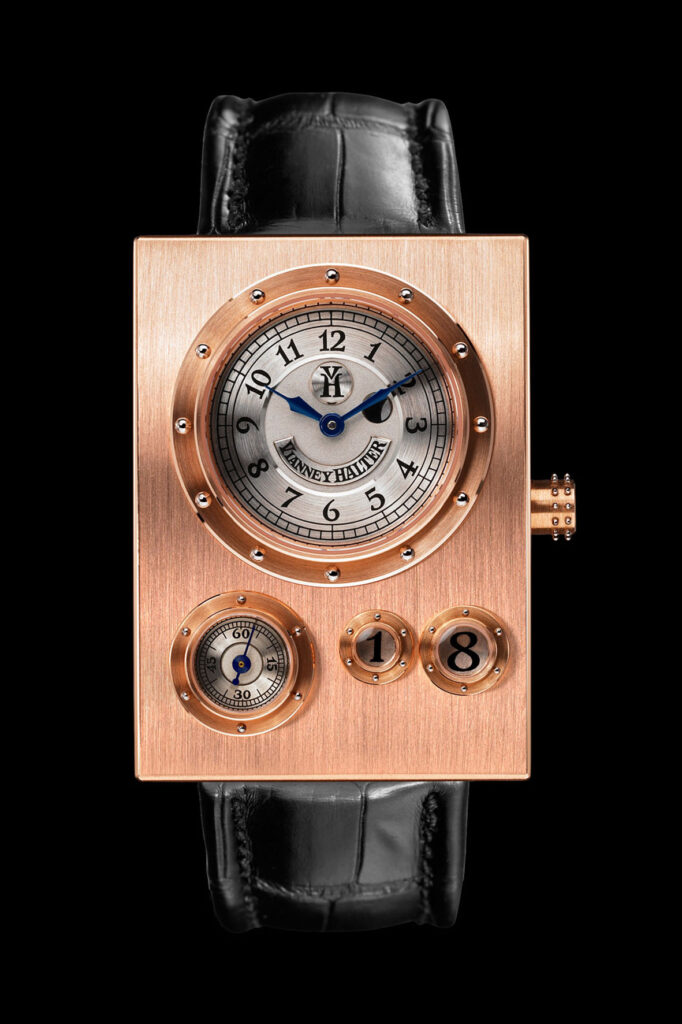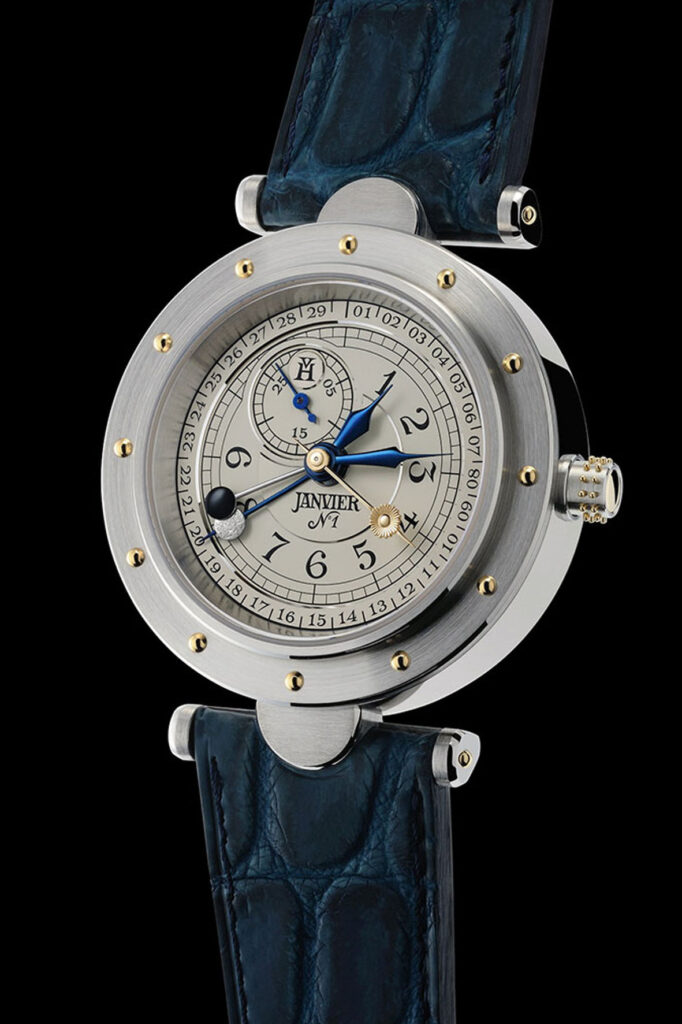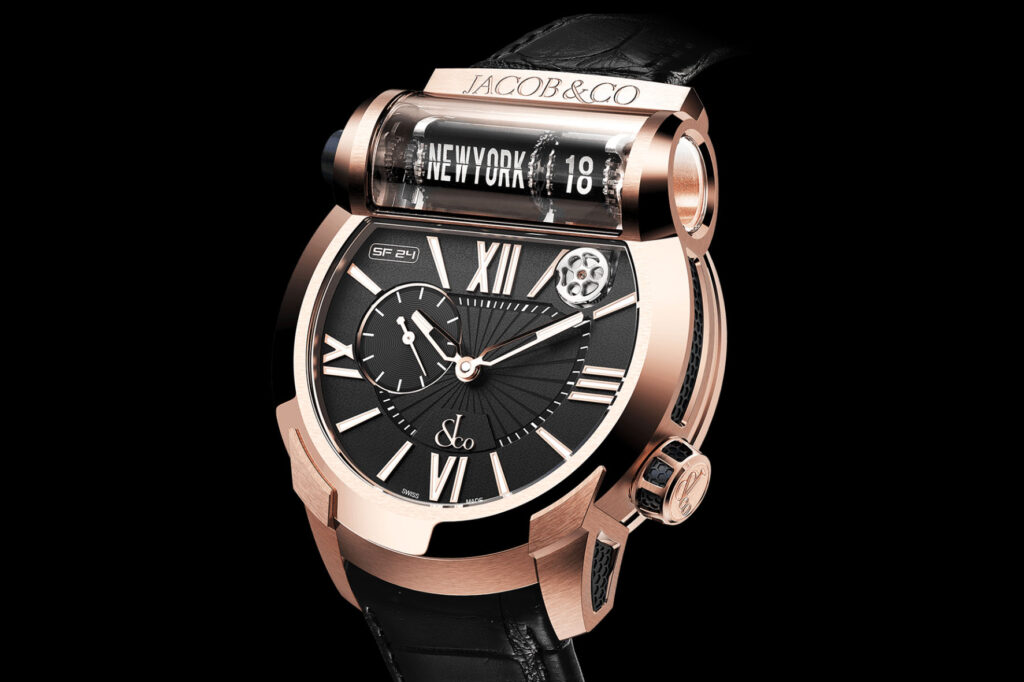Yesterday, Today and Tomorrow: everything about Master Watchmaker Luca Soprana, the Italian who became a manga in Japan!
9 May 2022From being a watchmaker in the Vicenza area to his experiences with Vianney Halter, Patek Philippe and Rolex; from his own atelier in Vaumarcus – in the canton of Neuchâtel – to the partnerships with big names, and even that manga about him created by Chronos Japan. The story, worthy of a film, of Luca Soprana – the 47 year-old from Valdagno, Economics and Business studies in Bologna, 3 languages spoken with ease (for the record: Italian, French, English) – appeals to us not only because it recounts the well-deserved success of one of the great contemporary watchmakers, but above all because it celebrates the distinctive traits of his character: irony, self-irony, empathy and rightly valued human relationships. Truly a rarity for the international watchmaking industry.
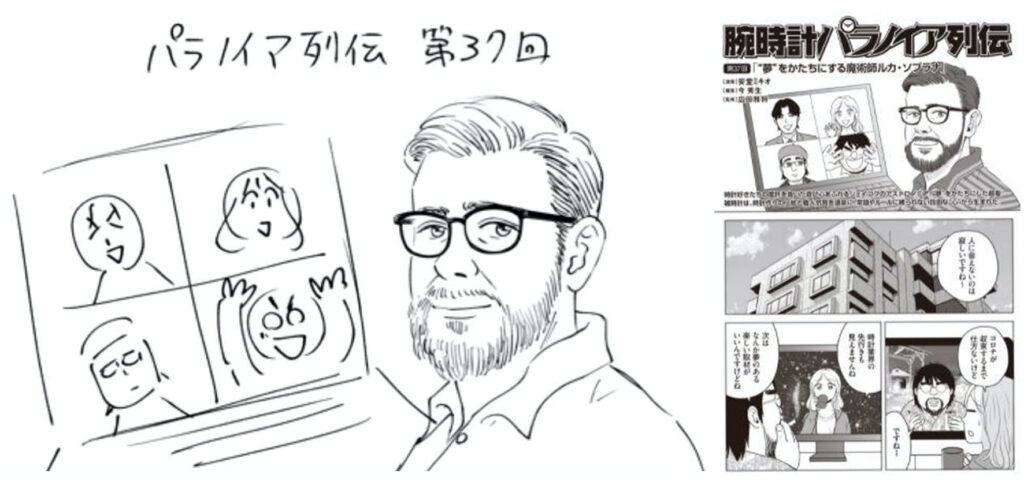
Luca, who do you respect most in international watchmaking?
Derek Pratt, who died in 2009, was an absolute giant and is unfortunately unknown to most people. Among the living, Andreas Strehler is certainly a star. It is a sacrilege that he is not revered by all – and a disaster for the industry and the fans who, I fear, will never consider him a legend enough. Another giant is Stephen McDonnell, who,just for the record, created the MB&F perpetual calendar. As the French say, you need the “physique du rôle,” which François-Paul Journe undoubtedly has, a worldwide pillar and genius, even in his being a character, with the addition of the industrial intelligence that others lack, and a flair for business worthy of the great Breguet. In any case, watchmaking today is 200% linked to the face and image of the watchmaker, and not to technical skills or watchmaking consistency. This is the only way to explain why one of watchmaking’s greatest talents, Andreas Strehler and his creations are not adequately celebrated.
Is it ego or necessity to focus on one’s image?
Both. After being in the shadows for years, I achieved visibility with Jacob & Co. which needed to gain credibility about their production. That’s when I became aware of the potential visibility increase that image represents. And I am referring to every situation. As an independent atelier with experimental products and a light-hearted approach, when you go to talk to CEOs or owners of structured brands, if you don’t have a bit of charisma and you’re not an all-round entertainer capable of seducing, you won’t get anywhere. You get out of the technical and it becomes a matter of human relations.
Where does your passion for hands come from?
In my family I represent the fourth generation of watchmakers, but it’s all my grandfather Roberto’s fault! It was he who taught me the basics, and it was with him that I spent every Saturday of my childhood, and the summer holidays, in his workshop repairing watches. In practice, with my grandfather, who had a very strong character, I was submitted to a psychological “torture”: if I worked for him as a child, he would give me a “salary” of 1,000 lire an hour to buy candy and Lego in large quantities!
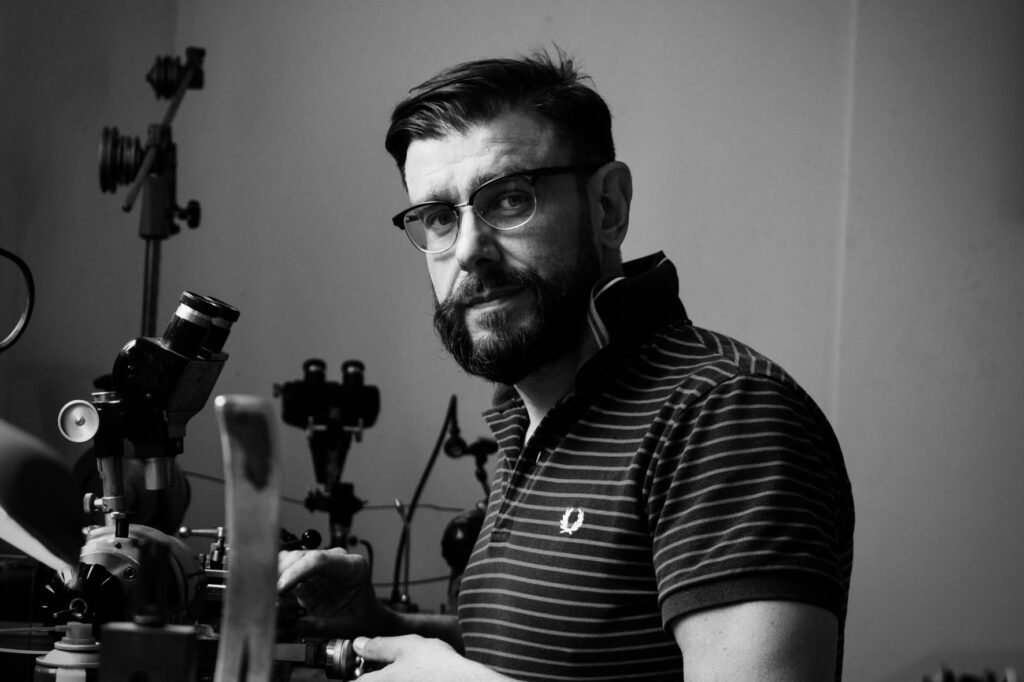
So you are predestined?
Probably so. Four generations of watchmakers but my family didn’t want me to become one. They said: you’re doing well in school, go to university, you don’t have to end up behind the counter of a shop or doing the watchmaker, it’s hard work. Get a degree and get a life! So, in the end, I’m the black sheep of the family (laughs). No, I’m just kidding, once I decided to become a watchmaker, everyone in the family was happy… the drama was my decision to leave the family and move to Switzerland. That was the most contentious decision. My poor grandfather hardly spoke to me for two years, and my father experienced this separation with great sadness. Only my determination and the battles I fought made up for the hardship of the separation.
From watchmaker in Vicenza to being a man in the GPHG, how did it happen?
It’s a long story. After my lighthearted years in Bologna, I returned to Vicenza and started working with my grandfather, who was enthusiastic about my decision. There were very few repairers in the Veneto area who were able to get their hands on vintage gauges, pendulum clocks, etc., so we had a lot of work as we were serving the whole region. But shortly afterwards I realised that what I knew was no longer enough to me, and I managed to attend the Wostep, which is the most important watchmaking training school (for foreigners) in Switzerland. While I was there, my professor, Stephen McDonnell, a phenomenal pupil of Kari Voutilainen, suggested that I send in my CV because they were looking for a teacher. They hired me. It was 2002 and I was the first Italian teacher at Wostep.
It’s a triumph!
Not at all. Consider that for at least the first four years my stay in Switzerland was always very temporary. Let me explain. At Wostep, at some point, the director became Marteen Pieters with whom I didn’t get along, so I found myself in Switzerland without a penny and absolutely without the slightest desire to return home with my tail between my legs. I looked for a job and found one at Vulcain as after-sales service manager. There I learnt about industrialisation and started working with Claret on the tourbillon with alarm. That went on for a couple of years. In the meantime, I learnt how to use Inventor, the programme for three-dimensional design. At that point, Vianney Halter was looking for a watchmaker, he hired me and I discovered what making a watch from A to Z meant, and it became a passion. I made the Trio work – hours and minutes, seconds and grande date in four different sub-dials – and in 2007, with the Classic Janvier N°1 (equation of time and moon phases in perhaps 12 platinum pieces) I took care of everything. I then moved on to BNB Concept to manage the prototype workshop. I had carte blanche on everything, and I was able to express both my creative and micromechanical sides, and everything was going great…
Now that’s a triumph!
Forget about it (laughs): shortly afterwards BNB went bankrupt! I took a couple of months off until Patek Philippe, who was looking for a trainer for in-house training, hired me. But I didn’t fit in at Patek. I made a mess, looking for dialectical confrontation. As I didn’t agree with some technical choices, I went and talked about it at the highest levels, so the following week I found myself triumphantly out of a job again. It was the end of 2010, and because life is beautiful Rolex immediately contacted for restoration work. I was immediately convinced but, I also immediately realised it was not for me. I lasted three months and left. My wife – we already had one child, then we had two more after that – looked at me and said: you’re really a disaster. I fell into depression. I went to see a psychologist to understand how to get out of this situation. And after a few sessions, it appeared clear to the psychologist that the problem was not me, I’m simply not made to work in a company, especially in Swiss companieswhere you have to follow orders in silence like in the army. Then if you add the Veneto approach – that is, I approach work at the company as if it were my own – it’s even worse because they think you represent a danger!
Your story deserves at least a Netflix docuseries…
Please… and why not instead, maybe I could make some money out of it! (laughs) After hitting rock bottom, I raised again. I took a course and perfected my knowledge of Inventor, and suggested to Vianney Halter that we work on a joint project, which won the innovation prize at the 2013 Geneva Watchmaking Grand Prix. At the same time, I went my own way and founded Ateliers 7h38 (which is the birth time of the founding partners’ first child), a true development workshop. Weimmediately sold the Split-Flap World Time to Jacob & Co. We made it and started thinking about Astronomia, which arrived, again for Jacob & Co., in 2014. The rest is history.
With Astronomia can we say triumph?
Yes, we can say that! Above all, the spotlights turned my way. This has been the case ever since the presentation of the prototype in Basel, both for customers and journalists. The partnership with Jacob & Co. has since produced an evolution of the calibre every two years: in 2016 we did the Astronomia Sky, and in 2018 the Astronomia Maestro minute repeater. Above all, thanks to the agreement with Jacob, international visibility arrived for Ateliers 7h38 and myself. At that point, we structured ourselves and the collaborations with big names came, which cannot be mentioned, otherwise they will kill me.
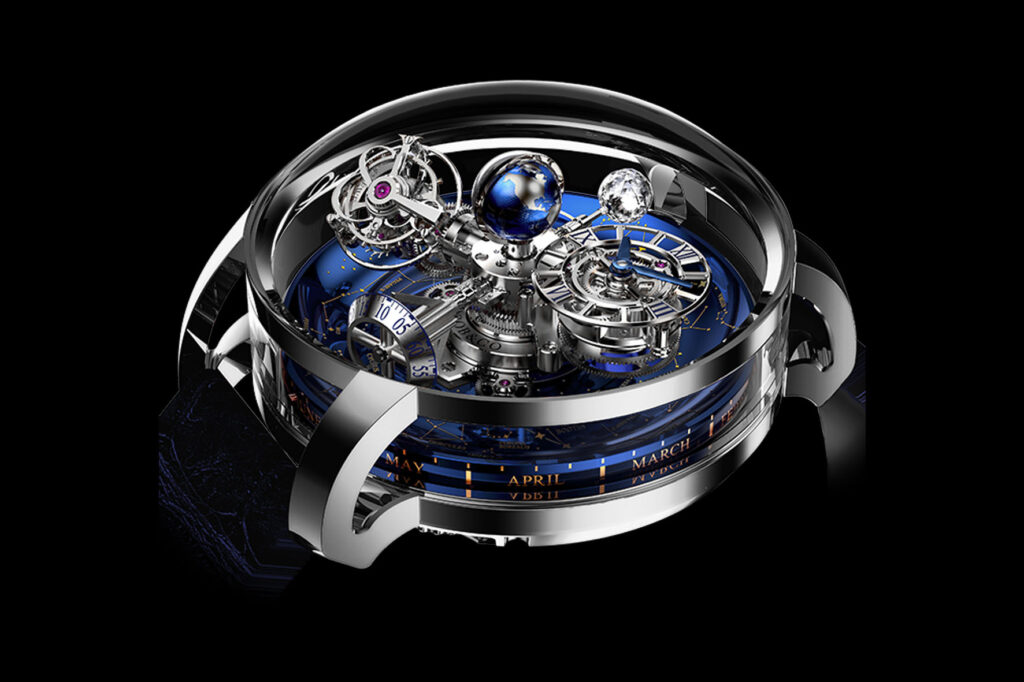
Tell us about the Derek Pratt…
Stewart Lesemann, one of the watchmakers who worked with me, had worked on the development of the first Derek Pratt prototype in 2014. I loved Derek Pratt, he was a giant. I talked to Stewart about it and we decided to take over the project with the approval of Jenny Haller, Pratt’s wife. I completely redesigned the caliber, highlighting Derek’s “signature”, represented by the remontoirs d’égalité and the two flying barrels. In 2022 we will launch a very beautiful special edition, but for now I can’t reveal more details.
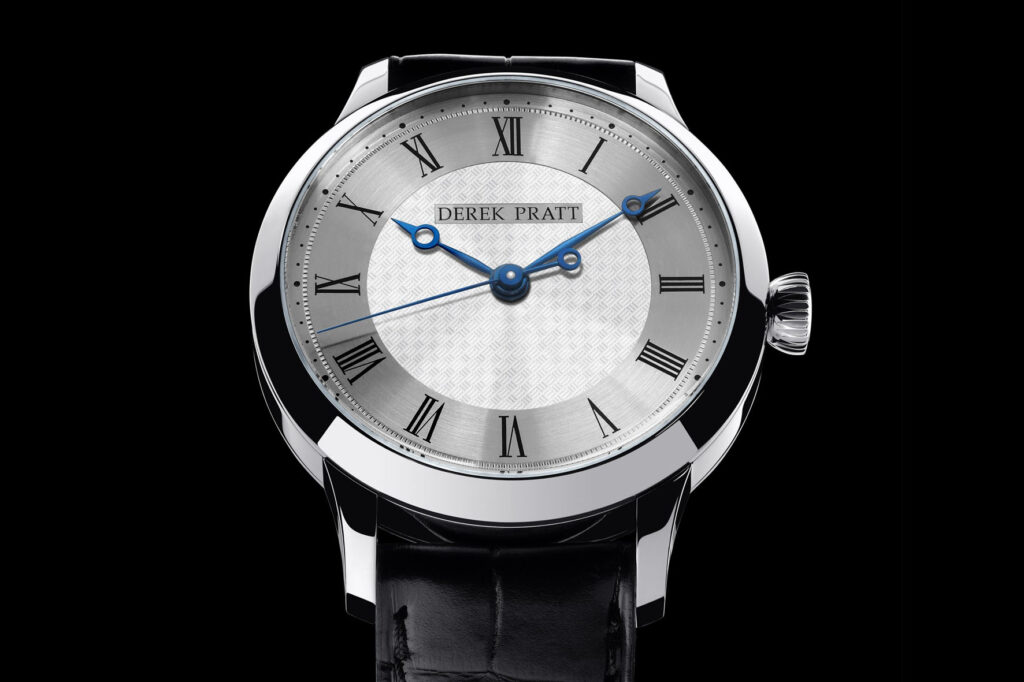
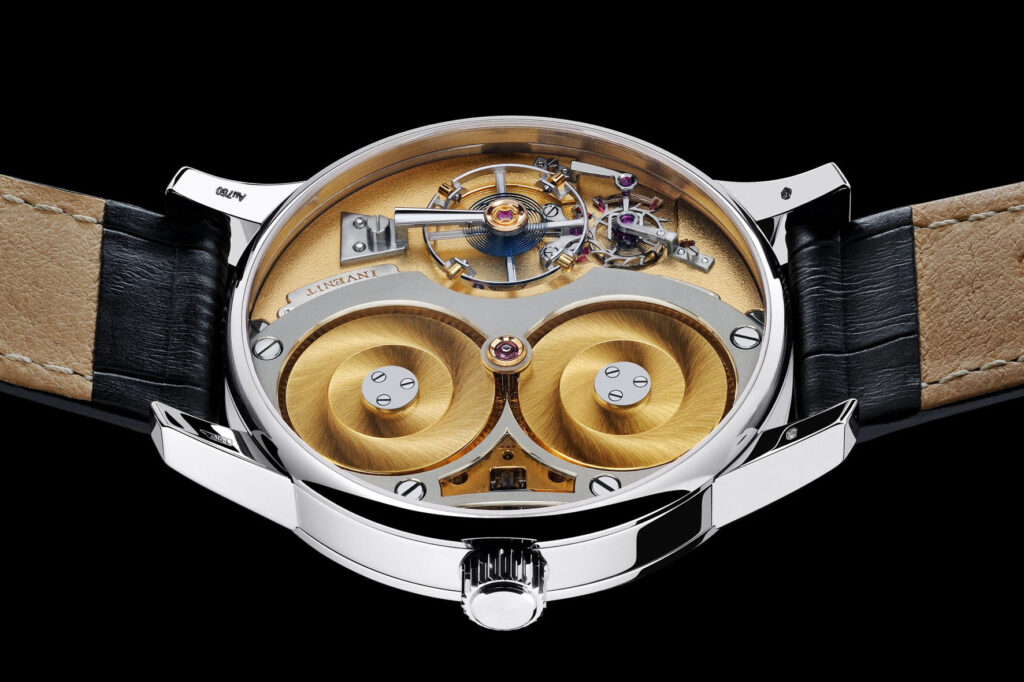
And the collaboration with Massena Lab?
At the beginning of 2021, William Massena asked me to make a watch in my own style: a classic revisited. The 11-piece Old School was born with William’s idea of putting my name on the calibre. With William – an exquisite person – there will probably be other collaborations in the future. After all, this is my life philosophy, which comes even before my watchmaking philosophy: for me, real human relationships are more important than marketing and becoming a celebrity. Above all, I have my own code of ethics. For example, I don’t like the idea that some independents are using to create cheap products: taking a Sellita or Soprod or even Miyota movement and sticking their name on it is too easy. I understand the use of existing calibres in order to create a more accessible product, but they must be Swiss-made or European, while the final product must present a certain originality that is also linked to the partnership. In the future, I would like to make something cool, original and affordable, why not? Watchmaking is also a men’s world. I want to be free to do what I like. I don’t want to be a slave to my brand, or to my main shareholder!

Let’s conclude with a question about the sector’s trend. How do you see the current boom of the usual names and several independents?
I see this as bad. This crazy trend of over-valuing certain watches will cause a cataclysm in the short to medium term, because today’s bubble does not reflect real value. A marvellous and extremely rare Derek Pratt pocket watch fetches 150,000 euro, while a FP Journe hours, minutes and seconds produced in series sells for much more. This makes no sense, without detracting from Journe’s genius. Today, everything is so unreal that the true watchmaking value – product quality and real watchmakers – no longer mean anything. By real watchmakers, I mean those who build from A to Z and not assemblers who outsource everything: one person does the finishing, another the wheels, and so on. Having said that, the first contraction will be on the independents because they are working too hard. For a true independent watchmaker, making 30 watches a year is already a disproportionate amount. If you make 100 or 600 a year, it’s industry. Remember that it took Philippe Dufour twenty years to make 100 watches!
By Michele Mengoli

